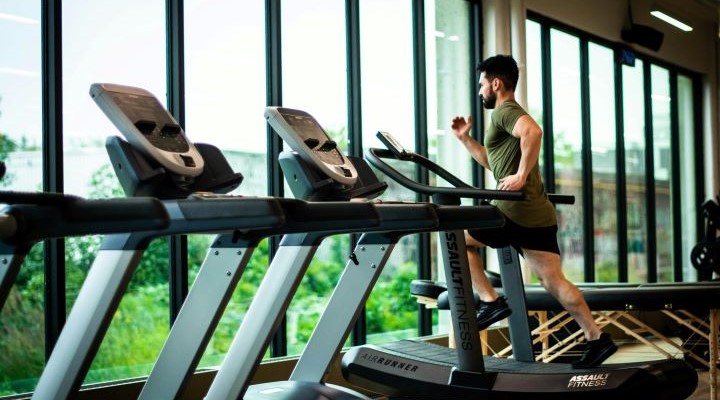
The Longevity Workout: Exercises Backed by Science to Help You Live Longer
Living longer is one thing. Living longer and maintaining your strength, mobility, and independence; that's the true goal. Fortunately, science now confirms that specific types of exercise can slow the aging process, preserve brain function, and dramatically reduce the risk of chronic disease.
In this article, we break down the most effective, research-supported exercises that promote longevity and help you stay active, capable, and resilient well into old age.
1. Why Exercise Matters for Longevity
Research from Harvard, Stanford, and the WHO is clear: regular physical activity is the single most important lifestyle factor influencing lifespan and quality of life. Even more powerful than diet alone, exercise helps reduce the risk of:
- Heart disease
- Diabetes
- Osteoporosis
- Cognitive decline
- Certain cancers
- Depression and anxiety
In short, movement protects everything, from your cells to your social life.
2. How Much Exercise Do You Need?
The World Health Organization recommends:
- 150–300 minutes/week of moderate aerobic activity OR
- 75–150 minutes/week of vigorous activity
- Plus 2 days/week of strength training
But science also says something more encouraging: even small amounts of movement offer major benefits. A 15-minute daily walk can reduce all-cause mortality by 22%.
3. Aerobic Training: The Heart of Longevity
Aerobic (cardiovascular) exercise improves heart and lung function, boosts circulation, and enhances oxygen delivery to your tissues and brain.
Best Forms of Aerobic Exercise for Longevity:
- Brisk walking – Reduces cardiovascular mortality
- Cycling – Improves joint mobility and metabolic health
- Swimming – Low-impact with full-body engagement
- Dancing – Combines physical and cognitive stimulation
- Hiking – Builds endurance and supports mental clarity
Aim: 30 minutes/day, 5 days a week. Even walking after meals can drastically reduce inflammation and insulin spikes.
4. Strength Training: The Longevity Multiplier
Muscle mass naturally declines after age 30; a condition known as sarcopenia. Strength training slows or reverses this decline, which is key because muscle mass is now recognized as a marker of longevity.
Benefits of Resistance Training:
- Preserves lean mass and bone density
- Reduces fall and fracture risk
- Improves insulin sensitivity
- Increases metabolic rate
- Enhances brain health and hormone balance
Simple Strength Exercises to Include:
- Bodyweight squats
- Lunges or step-ups
- Pushups or resistance band chest presses
- Dumbbell rows or TRX pulls
- Planks and core work
Frequency: 2–3 times per week, all major muscle groups
5. Flexibility and Mobility: Keep Your Body Young
Longevity isn’t just about years; it’s about moving through them with ease. Flexibility and mobility training ensure joints stay supple and aligned, reducing stiffness and injury.
Try:
- Daily stretching (especially hips, hamstrings, shoulders)
- Yoga or tai chi (gentle, restorative, and stress-reducing)
- Foam rolling for myofascial release (breaks up adhesions)
- Dynamic warm-ups before workouts (leg swings, hip circles)
Even 5–10 minutes a day of targeted mobility work pays off over decades.
6. Balance Work: Prevent Falls and Boost Brain Health
Falls are a leading cause of injury in older adults; and they’re often preventable. Balance training enhances coordination, proprioception (body awareness), and reflexes.
Incorporate:
- Single-leg stands (brush your teeth while balancing!)
- Heel-to-toe walking (like walking a tightrope)
- Standing yoga poses (tree, warrior III)
- BOSU ball or stability pad drills
Better balance reduces injury, but also improves brain function through increased neuromuscular communication.
7. High-Intensity Interval Training (HIIT): Time-Efficient and Powerful
HIIT involves short bursts of intense activity followed by brief rest periods. It has been shown to improve cardiovascular fitness, insulin sensitivity, and fat metabolism in a fraction of the time compared to traditional cardio.
Example HIIT Workout:
- 30 seconds sprint/jump rope/cycling
- 90 seconds rest or slow pace
- Repeat for 15–20 minutes
Caution: For beginners or those over 50, start gradually or under guidance.
8. Functional Movement: Training for Real Life
Functional fitness mimics movements you use in daily life, such as, picking things up, climbing stairs, carrying groceries.
Top Functional Exercises:
- Deadlifts (safely picking things up)
- Step-ups (stairs, balance)
- Farmer’s carry (grip strength + core stability)
- Kettlebell swings (power and coordination)
Functional movement protects your independence as you age and makes life easier today.
9. The Mental and Emotional Longevity Benefits
Exercise doesn’t just extend lifespan, it enhances “healthspan,” the number of years you live fully functional and happy.
Studies show:
- 30 minutes of exercise can reduce symptoms of depression
- Regular movement increases BDNF (brain-derived neurotrophic factor), supporting cognitive health
- Group exercise (like fitness classes) improves social engagement and mental resilience
Staying active supports emotional well-being, a crucial piece of healthy aging.
10. Movement Diversity
No single type of exercise does it all. Longevity is best supported by a balanced, varied movement routine. That way, you cover cardiovascular, musculoskeletal, neurological, and hormonal systems.
Longevity Blueprint:
- Aerobic: 3–5 days/week
- Strength: 2–3 days/week
- Flexibility: daily, 5–10 minutes
- Balance: 3+ days/week
- HIIT or Power: 1–2 days/week, optional
11. Start Where You Are And Stay Consistent
You don’t need to do it all at once. Pick a type of movement that fits your current fitness level and lifestyle. The key is consistency over perfection.
- Walking daily is better than one intense gym session per week
- Two 15-minute sessions can be as effective as one 30-minute workout
- Progress builds. Don’t rush. Just keep showing up
Final Thoughts
By building a workout routine that supports strength, mobility, heart health, and brain function, you’re investing in decades of better living.
Remember, it’s not about looking younger. It’s about functioning younger.
The National Wellness & Fitness Association provides many medical, fitness, and therapeutic resources to help you dive into this new fitness frontier.